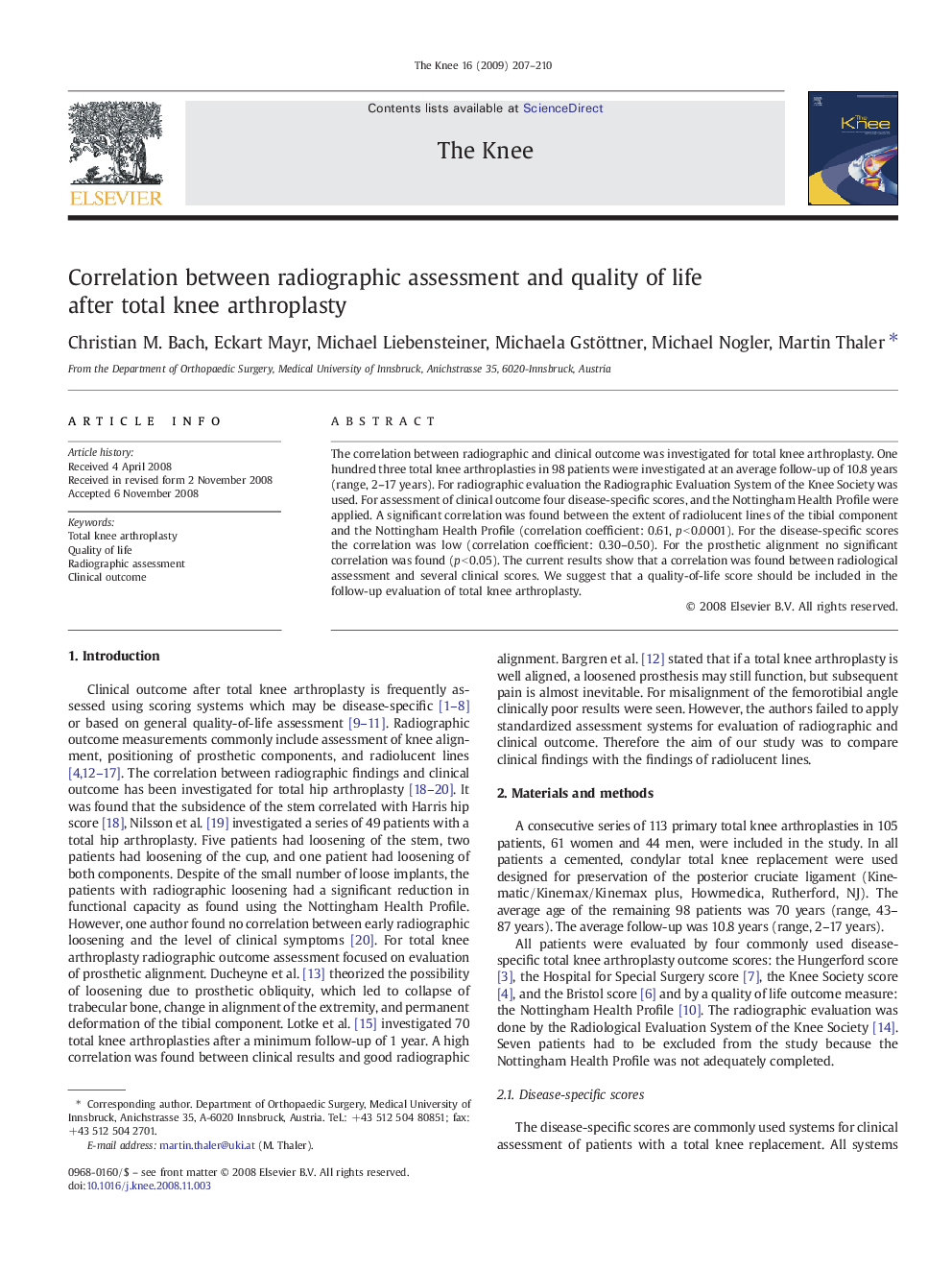| Article ID | Journal | Published Year | Pages | File Type |
|---|---|---|---|---|
| 4078158 | The Knee | 2009 | 4 Pages |
The correlation between radiographic and clinical outcome was investigated for total knee arthroplasty. One hundred three total knee arthroplasties in 98 patients were investigated at an average follow-up of 10.8 years (range, 2–17 years). For radiographic evaluation the Radiographic Evaluation System of the Knee Society was used. For assessment of clinical outcome four disease-specific scores, and the Nottingham Health Profile were applied. A significant correlation was found between the extent of radiolucent lines of the tibial component and the Nottingham Health Profile (correlation coefficient: 0.61, p < 0.0001). For the disease-specific scores the correlation was low (correlation coefficient: 0.30–0.50). For the prosthetic alignment no significant correlation was found (p < 0.05). The current results show that a correlation was found between radiological assessment and several clinical scores. We suggest that a quality-of-life score should be included in the follow-up evaluation of total knee arthroplasty.
